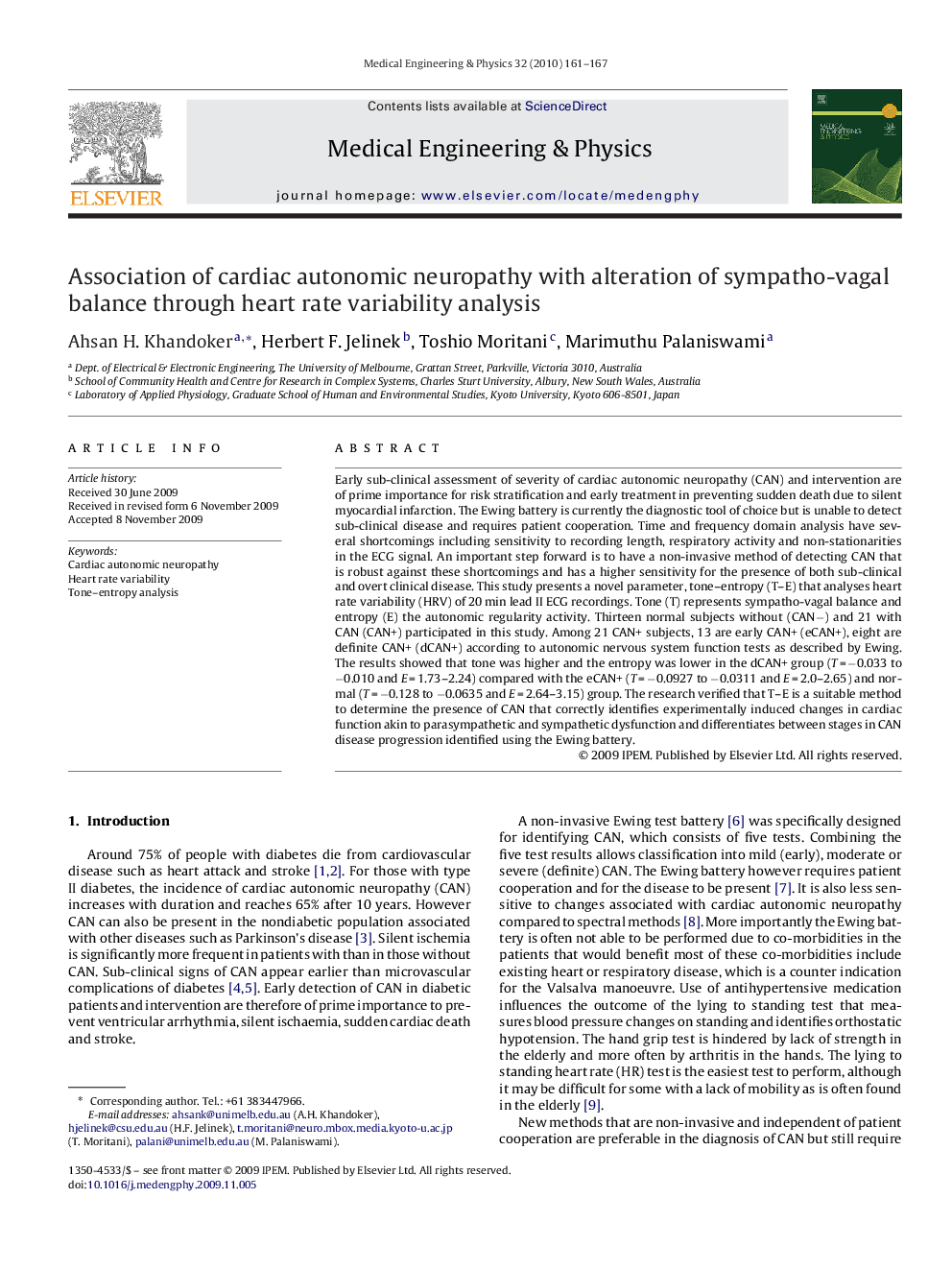| Article ID | Journal | Published Year | Pages | File Type |
|---|---|---|---|---|
| 877033 | Medical Engineering & Physics | 2010 | 7 Pages |
Early sub-clinical assessment of severity of cardiac autonomic neuropathy (CAN) and intervention are of prime importance for risk stratification and early treatment in preventing sudden death due to silent myocardial infarction. The Ewing battery is currently the diagnostic tool of choice but is unable to detect sub-clinical disease and requires patient cooperation. Time and frequency domain analysis have several shortcomings including sensitivity to recording length, respiratory activity and non-stationarities in the ECG signal. An important step forward is to have a non-invasive method of detecting CAN that is robust against these shortcomings and has a higher sensitivity for the presence of both sub-clinical and overt clinical disease. This study presents a novel parameter, tone–entropy (T–E) that analyses heart rate variability (HRV) of 20 min lead II ECG recordings. Tone (T) represents sympatho-vagal balance and entropy (E) the autonomic regularity activity. Thirteen normal subjects without (CAN−) and 21 with CAN (CAN+) participated in this study. Among 21 CAN+ subjects, 13 are early CAN+ (eCAN+), eight are definite CAN+ (dCAN+) according to autonomic nervous system function tests as described by Ewing. The results showed that tone was higher and the entropy was lower in the dCAN+ group (T = −0.033 to −0.010 and E = 1.73–2.24) compared with the eCAN+ (T = −0.0927 to −0.0311 and E = 2.0–2.65) and normal (T = −0.128 to −0.0635 and E = 2.64–3.15) group. The research verified that T–E is a suitable method to determine the presence of CAN that correctly identifies experimentally induced changes in cardiac function akin to parasympathetic and sympathetic dysfunction and differentiates between stages in CAN disease progression identified using the Ewing battery.
